A 1940s black and white cartoon featured a war between mice and cats, in which the cats looked very much like Nazis. The mice were under attack, the odds were against them. But they organized, fought back -- and (with a little help from Mighty Mouse!) defeated the Nazi cats.
The cartoon's music was a genuinely stirring song by Charles Tobias, "We Did It Before and We Can Do It Again!", written in 1940, in response to the attack on Pearl Harbor...
Here is the chorus: "We did it before, and we can do it again, yes we can do it again; we did it before -- and we'll do it again!"
****
Since 1998, disabled citizens of California and their families have been fighting a war against paralysis.
Our weapon was a research-funding law, the Roman Reed Spinal Cord Injury Research Act of 1999, named after my paralyzed son. (One of our earliest supporters was the real-life warrior, the late General Norman "Stormin' Norman" Schwarzkopf.)
In 1999, led by Assemblyman John Dutra (ret.), the bill became law. In 2005, patient advocates battled again, to renew the program's funding. Each time we wrote hundreds of letters and wrestled the bill through committee hearings -- and the money was restored.
But in 2010, the economy went South and our law's funding was removed.
In 2011, we fought back with a new bill -- which was defeated in the finance committee.
In 2012 we brought another bill, and this one passed the Assembly, passed the Senate -- before Governor Jerry Brown vetoed it, saying he did not approve of our funding mechanism, an add-on fee for traffic tickets..
But as the song says: "We did it before, and we can do it again, yes, we can do it again... "
This year, 2013, we are back again: this time with two bills, AB 714 and AB 666; different ways to fund paralysis cure research. Their details are not clear yet, but one will generate income from a (drastically reduced) red light fine; the other will be a straight funding request from the general fund.
Crucially, we have a champion to lead the fight.
Both new bills are being brought by Assemblyman Bob Wieckowski (D-Fremont).
This is the same stalwart Wieckowski who in 2011 and 2012 led our funding bills through all the various committee hearings, rallying support, delivering speeches, dealing with challenges -- only to have it shot down by the Governor's veto.
After trying twice, most legislators would have given up.
Fortunately for paralysis cure research, Bob Wieckowski is not "most legislators"!
With a cheerful smile, and the unbending determination of a Mighty Mouse cartoon, Assemblyman Bob is trying again.
What are we fighting for?
We want to put laboratory tools in the hands of scientists, so they can free America's five and a half million citizens from the slavery of paralysis.
Tools: The Roman Reed Lab at the University of California, Irvine, has a $550,000 super microscope, so scientists can actual observe what makes a spinal nerve grow -- or not.
If approved, a young scientist (or an old one) can be trained to use equipment like that -- and learn the mechanics of spinal cord repair, at the Roman Reed Lab.
Administered by the University of California system, the Roman Reed Core Laboratory at UC Irvine has become one of the key spinal cord injury (SCI) research institutions in America.
The grant-funding portion of the program has employed over 200 scientists and their staffs.
Small but mighty, "Roman's Law" has achieved 185 published scientific papers, each a small breakthrough, a piece of the puzzle of cure.
Our breakthroughs range from practical to amazing: from cost-saving new methods of rehabilitation using robotics, to a "helmet" which reads brain waves, so a paralyzed person can control a computer, to an electronic "bridge" to surpass the wound injury scar, to a way to reduce the injury itself by modifying the body's immune reaction.
Astonishingly, the Roman Reed Act is revenue-positive, bringing in more money than was invested. Our program spent roughly $14 million California taxpayer dollars -- but it attracted an additional $89 million in matching grants from outside sources like the National Institutes of Health -- new money for the state.
The program is supported by Lt. Governor Gavin Newsom, the University of California (UC) system, Art Torres (California State Senator, ret), Bob Klein (author of the California stem cell program), Jonathan "JT" Thomas, the program's current chair, legislators like Bill Monning, Gil Cedillo, Tom Ammiano, Jerry Hill, Holly Mitchell, V. Manuel Perez, Nancy Skinner, Mike Davis, the California Healthcare Institute (CHI), Hans Keirstead (his project achieved the world's first embryonic stem cell research human trials) Shinya Yamanaka (who invented a substitute for embryonic stem cells) and his fellow Nobel Laureate Paul Berg (Nobel Prize-winner for DNA research), Sherry Lansing (former President, Paramount Pictures), former state controller Steve Westly, Leeza Gibbons (Board Member California stem cell research program, former host Entertainment Tonight), Brock Reeve (Christopher's brother and director of Harvard Stem Cell Institute), Jeanne F. Loring (Director, Center for Regenerative Medicine at Scripps Research Institute), Mary Vassar, Executive Director UCSF, San Francisco General Hospital Brain and Spinal Injury Center) and many more.
In Southern California, visit the Roman Reed Laboratory at UC Irvine*. Or check out our website and download our 58-page report.
Christopher Reeve made a prediction: "One day, Roman and I will stand up from our wheelchairs, and walk away from them forever." Cure did not come in time for the paralyzed Superman, but the flame of his faith still lights our way. As he always said, we will "go forward," and we will prevail.
Can we pass a funding bill for paralysis cure research?
"We did it before -- and we'll do it again!"
*Saturday, March 16th, visit the Annual "Meet the Scientists" Forum, 12-4 pm, at the William J. Gillespie Neuroscience Research Facility, University of California, Irvine.
